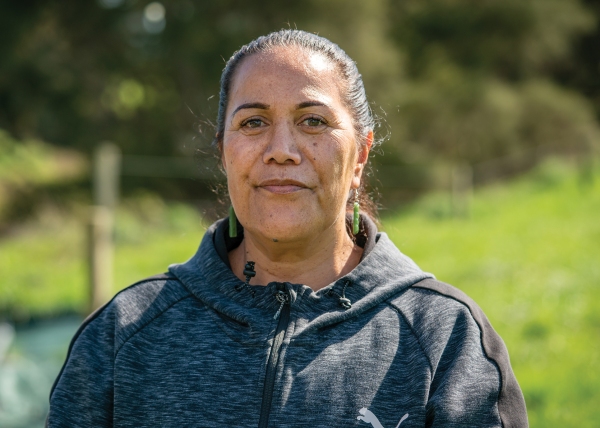A stream flows through the heart of a rural Waikato property where a novel research project centred on native freshwater algae is underway.
Te Paeahu Trust farms 420 cows across two dairy units on the 94-hectare property, near Morrinsville.
The Piakoiti Stream flows through one of those dairy units, and the stream is one of two field sites for an innovative experiment. This will test whether native algae can both treat agricultural drainage and enhance the kaitiakitanga of the land’s Māori owners.
Te Paeahu Trust Chairwoman Endine Dixon-Harris says by aiming to restore the mauri of the waterway, the project aligns with the trust’s kaitiaki and mātauranga values.
“The trust’s kaitiaki role is paramount when it comes to environmental responsibility for the whenua and its tributaries.”
About 25km further north, a similar trial is underway on a property owned by Tainui Group Holdings (TGH). This site is also next to a small stream which flows through the 200ha, 620-cow dairy farm. TGH Taiao Manager, Taroi Rawiri, says the sustainability of waterways and taonga species depends on new ideas to help reduce the negative impacts of nutrient runoff.
“As kaitiaki of this whenua, it is vital Tainui demonstrate leadership in improving farming operations to promote positive steps towards restoring the health and wellbeing of our waterways.”

The Filamentous Algae Nutrient Scrubbers (FANS) trials are testing the capability of native algae to filter contaminants such as nitrogen and phosphorus from farm runoff. The project centres on gently sloping floways, or channels, which convey drainage water from the surrounding paddocks through dense stands of native algae.
The Oedogonium, Spirogyra, Rhyzoclonium and Cladophora algae used in the trials all come from nearby streams. As the drainage water flows down the channel, the algae convert dissolved nitrogen and phosphorus into biomass which is harvested periodically. The harvested algae can be used as natural fertiliser or animal fodder. Other uses are also being explored by the research team and iwi partners.
Water samples are taken at the channel inflow and outflow points every week to assess the nutrient concentrations before and after treatment. NIWA Water Quality Scientist Dr Jason Park, who is leading the project, says monitoring indicates the FANS systems can produce more than 16 tonnes of algal biomass in four months. This points to removal of about 370kg of nitrogen and 75kg of phosphorus from the waterway per hectare, per year.
“We expect the biomass production and nutrient removal will more than double in the upcoming summer.”
Data collected from the trials will help determine the level of nutrients FANS systems can remove over a range of conditions. It can then be compared with other nutrient pollution mitigation systems such as wetlands, woodchip bioreactors and riparian management.
“We know already a FANS system can be established in a few weeks and be operational soon after, much more cost effectively than a constructed wetland, for example,” Park says.
“But it requires more maintenance than a wetland, to regularly harvest the algal biomass. We are investigating whether a full-scale model could be harvested every month, quarter, or even just once a year.”
The five-year research project is now into its third year, and data to date suggests that FANS systems could be used across a range of land types and nutrient loads. Larger trial sites will be established and tested over the coming year.
The MBIE Endeavour Fund research project has been co-developed with Māori and industry partners. With a major focus on linking mātauranga Māori with international science, the trial is guided by a Māori Advisory Panel with involvement of NIWA’s Te Kūwaha Environmental Research team.
The project also supports research by two Māori masters students who are investigating how mātauranga values can be applied to managing agricultural drainage and protecting mahinga kai.
This story forms part of Water and Atmosphere - December 2022, read more stories from this series
